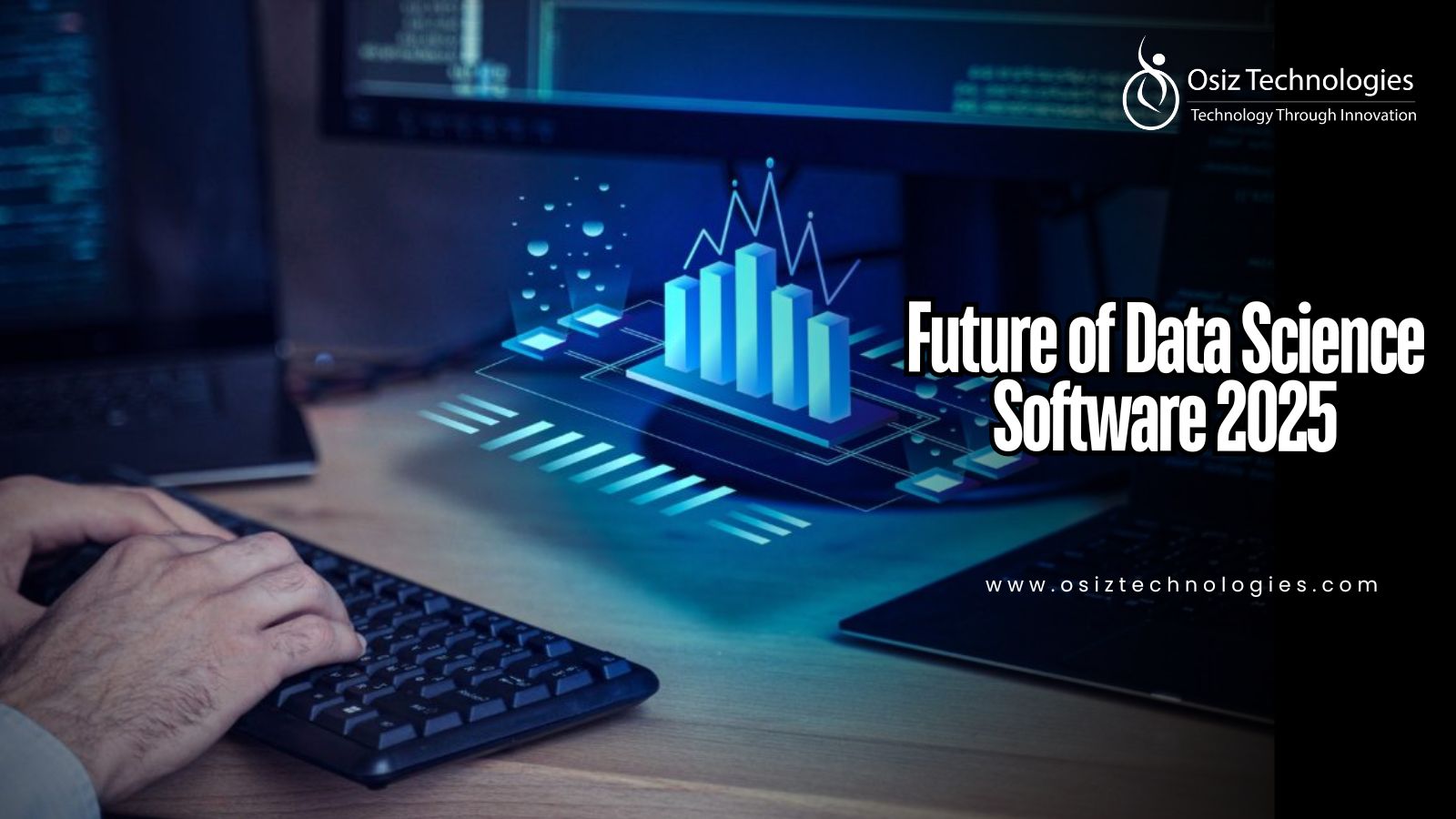The world of data science software is entering a powerful new chapter, driving how businesses analyze and act on information. The global market was at USD 10.15 billion in 2024 and is expected to grow beyond USD 29.98 billion in the next five years with an astounding 23.5% CAGR. Data science is booming so much now that everybody talks about it, industries are constantly implementing it, and AI is deployed at all levels to make decisions faster and wiser. This expansion is not only marking a trend but a change, wherein sophisticated technologies are crafting the next generation of smart solutions.
Key Trends and Technology in Data Science Software
Generative AI for Enhanced Analytics
Generative AI is changing the way data is discovered and utilized by organizations. It supports automated text-to-insight generation, scenario simulation, and synthetic dataset generation for model training. While it holds great promise, most companies are hindered by high GPU resource utilization, model hallucination challenges, and the complexity of integration with existing systems. The future phase will be based on responsible AI, control of bias, and safe deployment.
Predictive Analytics for Smarter Decisions
Predictive analytics depends on machine learning algorithms, classification models, and neural networks to recognize patterns buried in big data. Predictive analytics sees its applications in demand forecasting, detection of fraudulent activities, and supply chain optimization. Using complicated statistical methods and feature engineering, predictive models can convert uncertain data into actionable intelligence, minimizing errors in decision-making and enhancing operational resilience.
Big Data and Advanced Analytics
The explosion of unstructured information calls for flexible frameworks that can support real-time ingestion and distributed processing. In-memory computing, data lakes, and parallel processing pipelines are making it possible to explore terabytes to petabytes of data in real time. With embedded AI-powered analytics, big data environments can ingest structured, semi-structured, and unstructured inputs and uncover correlations, trends, and anomalies.
Cloud Migration & Scalable Solutions
Cloud adoption is emerging as a foundation of contemporary data strategies, with 44% of traditional companies already adopting cloud hosting. The market is predicted to be worth $806.41 billion by 2029, fueled by the need for elastic storage, hybrid deployments, and secure access controls. Cloud-native technologies such as microservices, serverless functions, and container orchestration enable data scientists to deploy, scale, and monitor machine learning models smoothly across environments.
Python as the Central Programming Language
Python is still the language to beat with its flexibility, readability, and prosperous ecosystem of libraries. From NumPy for numerical analysis to TensorFlow for deep learning, Python has end-to-end help for data cleaning, visualization, modeling, and deployment. Compatibility with Jupyter notebooks, APIs, and cloud environments makes it a must-have tool in every data science workflow.
Augmented Interfaces for Consumers
The demand for user-friendly data interaction is causing the development of augmented interfaces. With natural language understanding (NLU), visual identification, and real-time rendering, these technologies enable consumers to access insights without requiring coding knowledge. Augmented reality dashboards, voice assistants, and interactive data visualizations enable decision-makers to see data in an intuitive, context-aware way.
Quantum Computing
Quantum computing is transitioning from the experimental to the practical realm in data-intensive fields. Through the use of qubits, quantum gates, and probabilistic superposition, it can optimize, encrypt, and learn at previously unseen speeds. As algorithms such as quantum machine learning (QML) continue to advance, they can outcompete classical computing in applications necessitating immense parallelism, including drug discovery, financial modeling, and refined simulations.
Industry Impact of Data Science Software
Transforming Healthcare with Data Analysis
Healthcare is being transformed by data science software, combining electronic health records (EHRs), medical imaging, and genomic sequencing into predictive models for clinical decision support. Explainable Artificial Intelligence (XAI) provides physicians with transparency into algorithmic results, assuring diagnostic accuracy, regulatory compliance, and patient trust. Deep learning for radiology scans and natural language processing (NLP) for unstructured data facilitate earlier disease detection and personalized treatment plans, and are readily available.
Transforming Financial Services
In finance, data science applications drive fraud detection, algorithmic trading, and threat modeling through analysis of high-frequency transactional data and real-time market feeds. Blockchain-backed analytics coupled with ML-based models enhance security and transparency. Predictive algorithms optimize credit scoring, while secure data pipelines and automated anomaly detection systems reduce operational risks and improve regulatory reporting.
Data-Driven Innovation in Retail
Retail businesses leverage data science solutions to examine customers' purchase patterns, behavior patterns, and supply chain information for hyper-personalization in marketing. Methods like recommendation engines, demand forecasting algorithms, and sentiment analysis optimize customer engagement and automate inventory management. Computer vision is also used by retailers to enable cashier-less stores, and predictive analytics optimizes sales performance through optimal product placement strategies.
Insurance with Predictive Insights
Insurance companies are dependent upon predictive analytics, actuarial science, and risk assessment logic to make underwriting and claims handling more efficient, and to handle situations. Utilizing machine learning models and real-time IoT sensor data, insurers forecast accident likelihoods, identify fraudulent claims, and tailor premium rates. Advanced analytics with natural language processing (NLP) enhances customer service with automated documentation of claims and policy suggestions.
Why Choose Osiz for Data Science Software Solutions?
At Osiz, we empower enterprises with next-generation data science software that caters to their individual requirements. With 15+ years of experience in the industry, we are a software development Company that provides solutions in predictive analytics, machine learning, big data processing, and cloud-native platforms. We provide A-to-Z integration of explainable AI, secure model deployment, and intuitive data interfaces that enable intelligent decisions. With our skills and expertise, we can turn raw data into actionable insights, automate processes, and accomplish long-term expansion in the digital-first economy.
Listen To The Article










